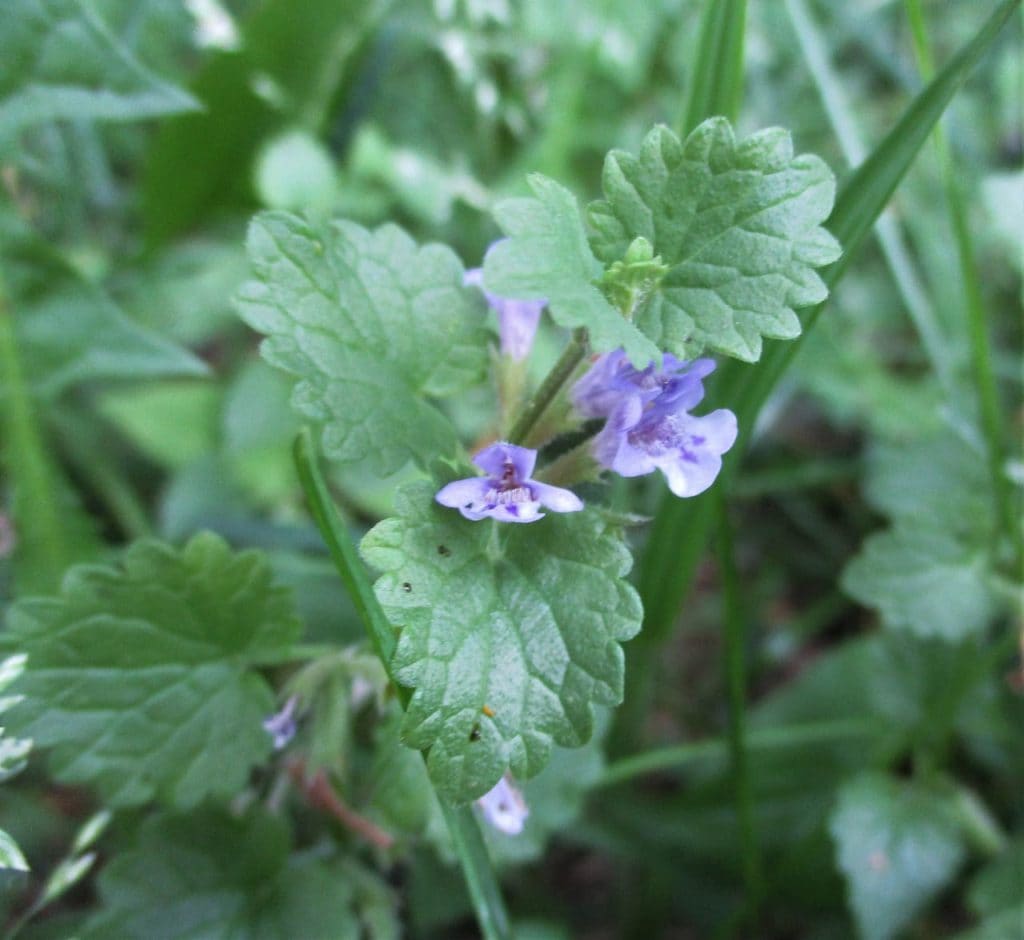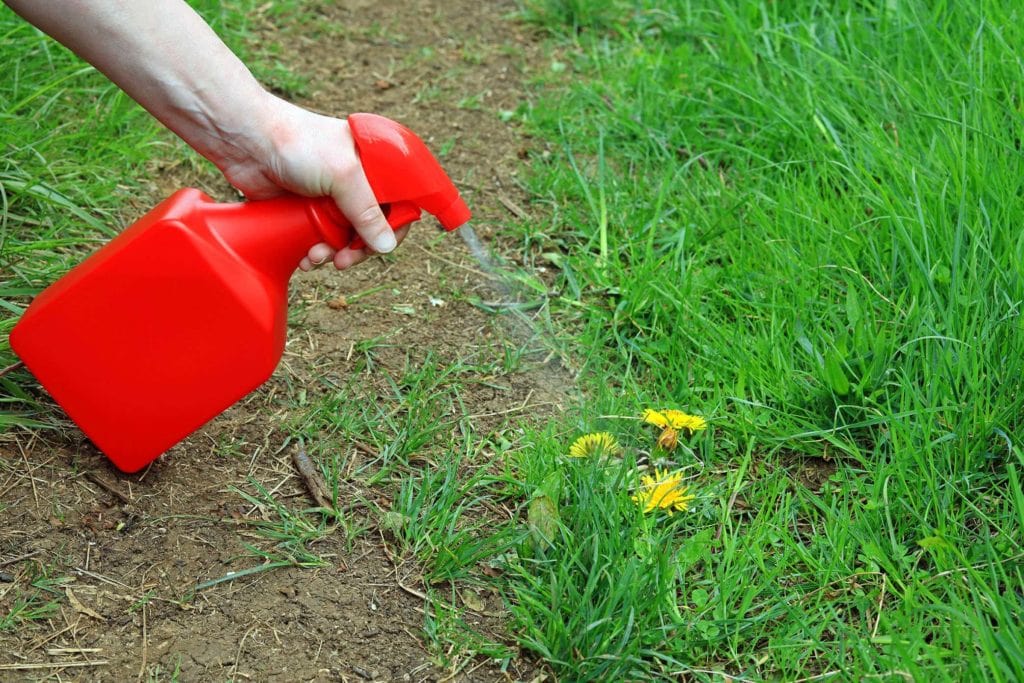3 Ways to Get Rid of Creeping Charlie (Quick & Easy)
-

- Last updated:


Glechoma hederacea, otherwise known as Creeping Charlie, is a vivacious weed that can quickly cover your yard and smoother any other plants that are trying to grow. This ground ivy not only kills everything in its path, but it’s also perennial, so you can expect to see it year after year.
Getting rid of Creeping Charlie is no easy feat especially as the vines themselves sprout roots to anchor it to the ground. If you are plagued by the aggressive plant, not all is lost. There are some things you can do to get rid of the plant for good. Below, we have outlined three ways to effectively remove this weed from your yard. We have shared some additional tips, as well, to help you better understand this creepy Chuck!
Identifying Creeping Charlie
Before you start pulling, yanking, whacking, and clipping, you want to ensure you have the right plant. Creeping Charlie can be confused with other plants that are a lot easier to get rid of. The last thing you want to do is spend a lot of time removing a weed that could have been done quickly.
- Where Is It Growing: Creeping Charlie likes shade. It will find all the dark places in your lawn to take root. If you find some vines that are growing only in sunny areas, you may have another plant on your hands.
- The Smell: This weed is part of the mint family. If you crush up one of the leaves, you should detect a minty odor. You can also taste it as Creepy Charlie is edible. Just be sure it’s the plant you think it is before sampling any lawn clippings.
- Low to The Ground: While this plant is a weed and a vine, it grows close to the ground. Hence the name “creeping” Charlie, it moves slowly along the ground.
- The Leaves: The leaves on the vine are a bright green color, and they are shaped like kidneys. They also have scalloped edges.
- Look at the Stems: Not only will you notice that the stems have grown roots along their length, but they are also thick. Creeping Charlie is often described as looking like a carpet mat.
- Flowers: In the Springtime, the plant blooms small blue flowers that are funnel-shaped.

Three Ways to Remove Creeping Charlie
Getting rid of this vine-like weed is not easy, but with these three options, you should be able to find a procedure that works for you. Take a look at the different steps to see which option will help your lawn.
1. Pull the Weeds

This may sound like an easy solution and a back-breaking chore at the same time. Unfortunately, both are somewhat true. The most important thing to remember with this option is not to start tugging them out without the pre-pulling steps. Otherwise, you won’t get anywhere.
Additionally, this is a good option if you have a small to medium-sized creeping Charlie area. If the space is too large, it will be too difficult.
- Trim the Leaves: Firstly, you want to trim back as many leaves as possible to expose the stems. As mentioned, the stems grow roots, so that is where you want to pull.
- Pick Up the Clippings: Before you move on to the next step, you must bag up and throw away the leaf clippings. If not, they will grow roots themselves, and you will have to start the whole process over. You will also be shocked at how fast they can do so.
- Wet the Soil: You want to soak the soil as much as possible. You can use a watering can, but a garden hose is recommended as you want the soil to be soaked. The point of this is to loosen the root’s grip on the soil. The wetter the better.
- Loosen the Soil: Though you have already loosened the soil with water, you also want to go in with a pitchfork or similar tool to loosen the soil again. By doing this, you will be able to connect with the soil deeper in the earth.
- Pull the Plant: To pull the plant properly, grab the stem as close to the soil as possible. Slowly pull to ensure you are getting the entire root. If it breaks, you can use your garden tool to dig up the rest. Like the leaf -clippings, leaving even a small portion of the root can cause them to grow back.
- Check for Missed Plants: You always want to go back and check for missed plants. As you are pulling, it’s best to bag them up as you go. Not only will it keep them from growing back, but it makes it easier to see anything you missed. Additionally, keep an eye out for new plants growing in the following days.
- Do It Again: Chances are, you will not be able to get all of this sneaky vine in the first pass. After a couple of weeks, you will likely have some grow back, though it should be far less. This is when you want to go for a second round-which usually does the trick.
2. Smother Creeping Charlie
If you have a fairly large portion of land that needs to be weeded or pulling the ground ivy by hand is not something you can take on, you should consider smothering the plant. This is an effective way of ridding your lawn of it, but as with the above solution, it’s important to do so correctly. If not, you can waste your time as the Creeping Charlie continues to grow.
Cover the Plant
The first step is to cover the plant with either cardboard or a couple of layers of newspaper. You can use any material that is big enough as long as it will block out the light completely. Keep in mind, Creeping Charlie grows in the shade, so for this to be effective, you need to block out the sun altogether.
You also want to make sure you are extending the cover 10 to 14 inches outside the perimeter of the vine. Though they are underground, it’s important that you block out the sun from the roots, as well. Finally, secure the cover with rocks, bricks, stakes, or anything else that will keep it in place during the wind and rain.
Allow It to Sit
Once you have it completely covered, it needs to remain undisturbed for a week. You will also want to periodically check it to make sure the cover has not come loose, and the plant is not growing outside of the cover. If you find this happening, you likely didn’t extend the perimeter far enough.
You can add some further cover, however, you will need to start the clock over at that point. If severe weather is pending, another trick is to place large rocks intermittently on the cover. Placing a few in the center and more around the edges will ensure your efforts do not go to waste. Don’t worry about any moisture, though.
Remove the Plant
If everything was done correctly, the Creeping Charlie should be dead when you pull back the covering. You should also be able to easily remove it by hand to bag up and dispose of. If you have a few stubborn areas, you can follow the steps above and saturate the soil and use a pitchfork to help pry it up. You also want to keep watch for signs it’s growing back, so you can nip it in the bud (no pun intended) right away.
- Related Read: 43 Common Types of Flowers in the US (with Pictures)
3. Use an Herbicide

You also have the option of using a herbicide to get rid of large areas of Creeping Charlie. Be advised, however, we strongly advise against chemical pesticides. Not only are they harmful to your other plants, pets, and you, but they can run into your water supply. A broadleaf, grass-friendly herbicide is an option if the two other solutions are not working.
- When: You want to use a herbicide in the fall before the first frost for it to take effect and be the most effective.
- Conditions: You also want to check your local forecast before applying the chemical. You want to pick a time that has little to no wind, rain, and/or snow for at least 24 hours; though 48 hours is recommended.
- How Long: Once applied, you can leave it on for the winter. This will give the herbicide time to work and kill the plant at the roots.
- Clean-Up: Come the Spring, you should be faced with dead Creeping Charlie. You can easily rake it up and dispose of it in the trash. Note: We do not recommend burning and plants or clippings that have been treated with herbicides or any other chemicals. You can check your product for more details.
The Positive Side of Creeping Charlie
Okay, we understand if you are rolling your eyes at this point. What good points could this aggressive, vine-like weed possibly have? When you consider that it’s immune to most burrowing pests, goats won’t even eat it, and it’s banned in some states (Connecticut, to name one), there is not a lot of good to say.
That being said, it does have a few good qualities. For starters, it is a pretty plant that is typically used as a border vine for flower beds. As it drapes and climbs, you can use it on multiple surfaces to create an aesthetically pleasing lawn. Besides that…
- It’s Edible: Although we mentioned it before, we thought we would bring it up again. As it’s a cousin to mint, this is an edible plant. You can put it in salads, smoothies, and many other recipes.
- Use as Grass: If you have a shady area of your lawn that won’t hold grass, Creeping Charlie makes a great substitute. It can turn a dirt patch into a lush, green area.
- Stops Erosion: Another good quality is this vine is good for erosion control. Due to the thick stems and complex roots, it is a great plant to situate in an area where the earth is falling away.
- Good for Pollination: When the flowers bloom in the spring, they are a great favorite of our little pollinators. Bees particularly love the sweet nectar of this weed.
In Conclusion
If you are unable to find a practical use for this plant, and it has started to take over your entire yard, removing it can be an uphill battle. Creeping Charlie is a tough foe, but using one of the three methods above will ensure you come out the victor. We hope you have enjoyed this article, and it has given you the easy steps you need to reclaim your lawn.
Featured Image Credit: Pixabay
Contents


